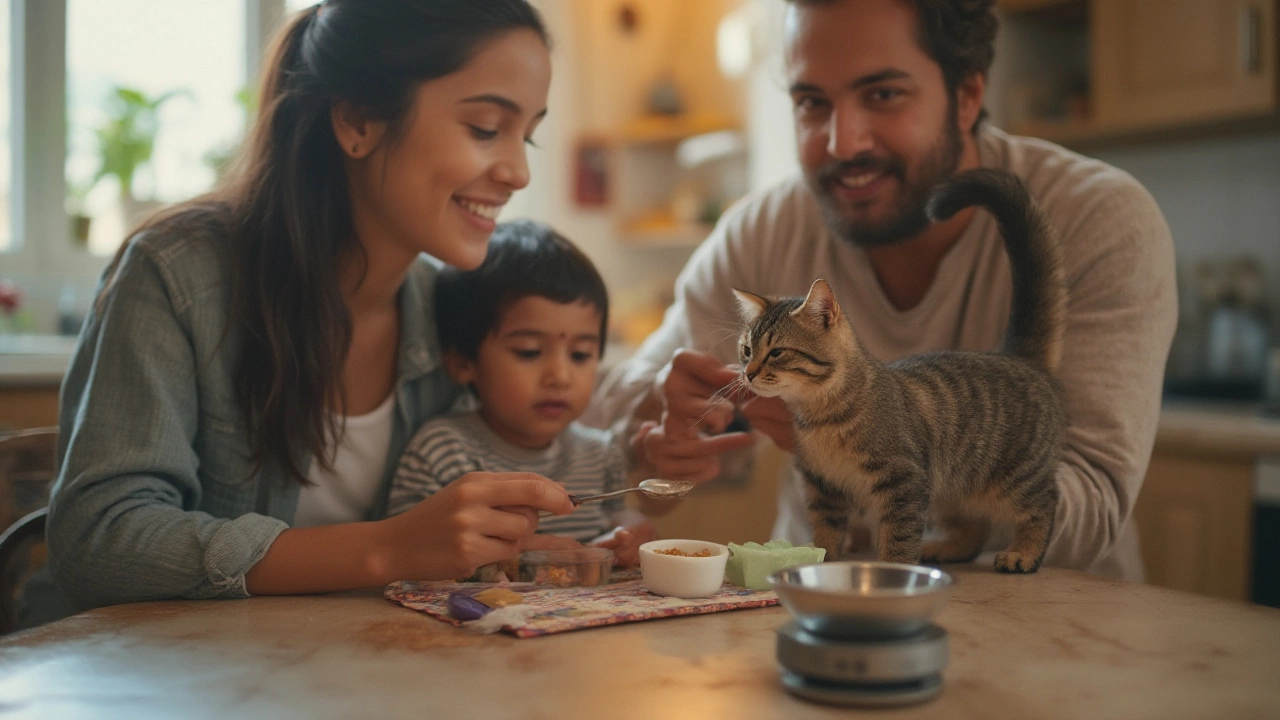Cat Feeding Guide: Quick Tips for Everyday Meals
Feeding a cat can feel like solving a puzzle—how much, how often, what kind of food? The good news is you don’t need a degree in nutrition to get it right. Below are the basics that work for most cats, whether you’re feeding a picky kitten or a senior who’s lost appetite.
How Often Should You Feed Your Cat?
Most adult cats do well with two meals a day, spaced about 12 hours apart. This mimics their natural hunting pattern of short, frequent meals. Kittens need more—three to four meals daily—because they burn energy fast and their stomachs are tiny. Seniors might prefer smaller, more frequent servings if they’re dealing with dental issues or slower digestion. Keep an eye on your cat’s weight and adjust portions accordingly; a tablespoon of dry kibble per 5 pounds of body weight is a solid starting point.
Mixing Wet and Dry Food: What Works?
Dry kibble is convenient and helps keep teeth clean, while wet food adds moisture and richer flavor. A 50/50 mix often satisfies both needs. Start with a small amount of wet food—about a tablespoon per 5 pounds—mixed into the dry kibble. If your cat slurps it up, you’ve hit the sweet spot. Remember to serve wet food within two hours of opening to avoid spoilage, and always store leftovers in the fridge.
Transitioning between foods? Do it slowly. Blend a bit more of the new food each day for a week. Sudden changes can upset a cat’s stomach and lead to vomiting or diarrhea. If you notice any digestive issues, pull back to the previous mix and try again more gradually.
Portion control matters. Overfeeding leads to obesity, which can cause diabetes, joint problems, and a shorter life. Use a measuring cup or kitchen scale, and track your cat’s weight every month. If you see a few extra pounds, cut the kibble portion by 10% and add a little more playtime.
Don’t forget water. Even if you feed wet food, cats still need fresh water. Place a bowl in a quiet spot and change it daily. Some cats love moving water—consider a small pet fountain to encourage drinking.
Lastly, treat your cat with love, not just food. Use treats sparingly—no more than 10% of daily calories. Choose grain‑free, protein‑rich treats, and give them during training or as a bonding moment, not as a snack binge.
Follow these simple steps, and you’ll see your cat thriving: shiny coat, energetic play, and fewer vet trips. Feeding doesn’t have to be a guessing game—just a routine you both enjoy.

How Much Wet Food Does a 10 lb Cat Really Need? Daily Feeding Tips & Guide
Discover how much wet food a 10 lb cat needs daily, tips on portion control, and why the right amount matters for your feline’s health.
read more

